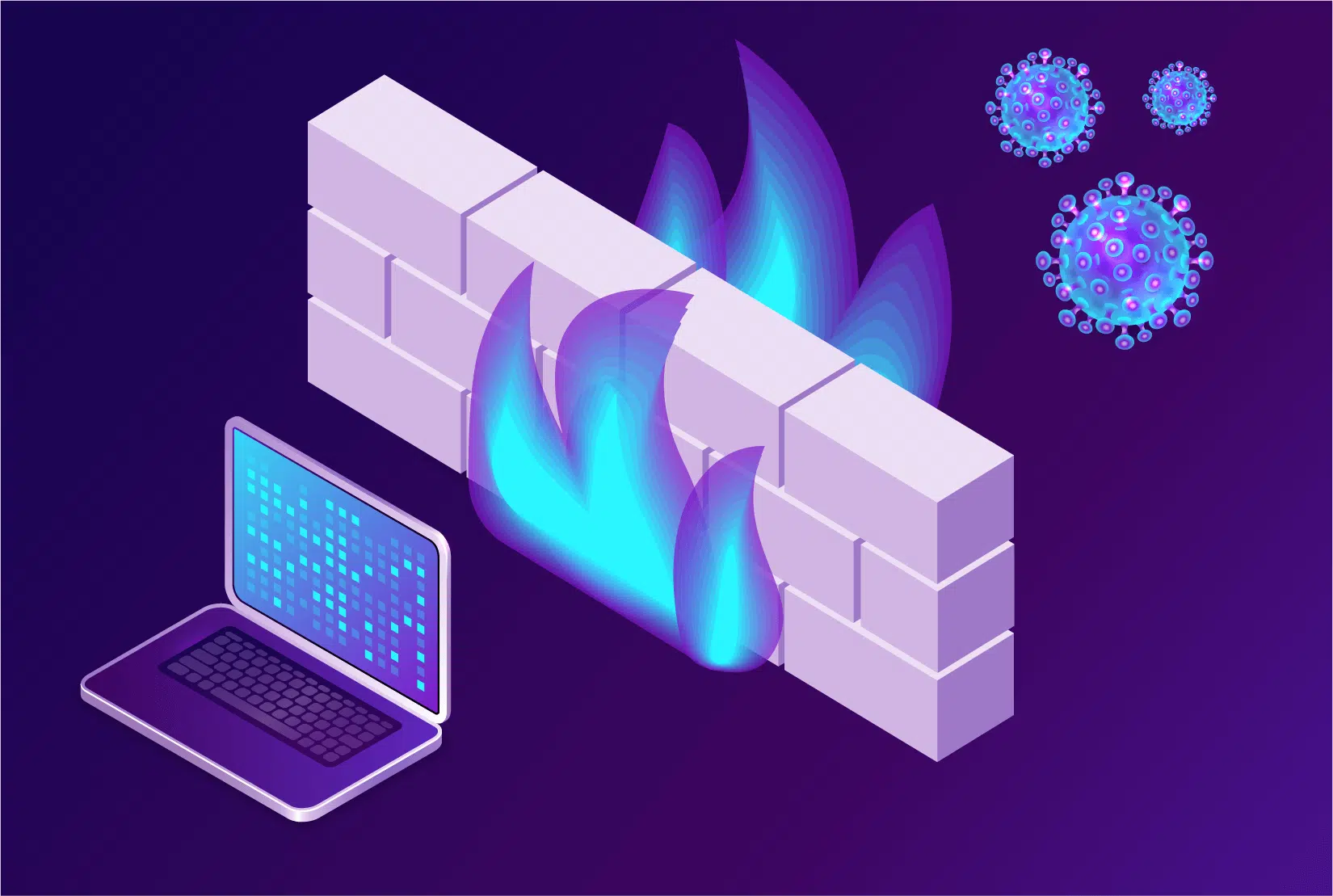A firewall is a network security device designed to monitor, filter, and control incoming and outgoing network traffic based on predetermined security rules. Acting as a digital gatekeeper, firewalls establish a crucial barrier between trusted internal networks and untrusted external networks, such as the internet. This fundamental cybersecurity tool serves as the first line of defense against unauthorized access, cyber attacks, and malicious code attempting to infiltrate private networks.
Think of a firewall as a security checkpoint at an airport or building entrance. Just as security personnel examine identification, scan belongings, and determine who can enter a secure facility, firewalls inspect data packets traveling through networks and decide whether to allow or block them based on established security criteria. This process involves analyzing various packet characteristics including source and destination IP addresses, port numbers, protocol types, and even specific content within the data packets.
Firewalls come in multiple forms – hardware devices, software applications, or hybrid solutions – each offering different levels of protection and functionality. Organizations configure these security systems with specific rules that permit or deny traffic based on their unique security requirements and risk tolerance. The primary purpose remains consistent across all implementations: preventing bad actors, hackers, bots, and other threats from overloading or infiltrating private networks to steal sensitive data.
In today’s evolving cybersecurity, firewalls remain a cornerstone of network defense, though advanced threats require additional security measures alongside firewall protection. The rise of cloud computing and hybrid work environments has further emphasized the critical importance of comprehensive firewall strategies in maintaining robust network security.
How Firewalls Work: Core Operating Principles

Firewalls operate using three primary methods to examine and control network traffic. Packet filtering represents the most fundamental approach, where firewalls screen small data units against predetermined rule sets. Packets that adhere to established rules progress to their intended destinations, while non-compliant packets face rejection. This method allows filtering based on elements like source and destination IP addresses, port numbers, and service types.
Proxy service functions as an intermediary layer between users and external networks. Instead of permitting direct communication between internal systems and the internet, proxy firewalls fetch data on behalf of users and relay it back, preventing direct system access. This approach creates additional anonymity and network protection by establishing an extra separation layer between clients and individual network devices.
Stateful inspection combines packet inspection technology with TCP handshake verification, offering more comprehensive protection than either method alone. These firewalls maintain contextual databases of vetted connections and utilize historical traffic records to determine appropriate scrutiny levels for each packet. This method tracks outgoing packets and compares incoming responses against active session databases, approving only those matching valid corresponding outbound packets.
Types of Firewalls: Understanding Different Architectures
Packet-Filtering Firewalls
Packet-filtering firewalls represent the most basic and oldest firewall type. These systems create checkpoints at traffic routers or switches, performing simple checks on data packets by inspecting surface-level information such as destination and origination IP addresses, packet types, and port numbers without examining packet contents. While resource-efficient and minimally impactful on system performance, they offer limited protection compared to more sophisticated firewall architectures.
Circuit-Level Gateways
Circuit-level gateways provide quick traffic approval or denial without consuming considerable computing resources. These firewalls verify Transmission Control Protocol (TCP) handshakes to ensure requested packet sessions are legitimate. However, they don’t examine actual packet contents, creating vulnerabilities where malware-containing packets with proper TCP handshakes can pass through undetected.

Stateful Inspection Firewalls
Stateful inspection firewalls combine packet inspection and TCP handshake verification for enhanced protection. They maintain contextual databases of approved connections and reference historical traffic patterns to make informed decisions about packet scrutiny levels. While offering superior security, these firewalls require more computing resources, potentially slowing legitimate packet transfers.
Application-Level Gateways (Proxy Firewalls)
Proxy firewalls operate at the application layer, filtering incoming traffic between networks and traffic sources. These cloud-based or proxy device solutions establish connections to traffic sources first, inspecting incoming data packets for both packet integrity and TCP handshake protocols. Advanced proxy firewalls perform deep-layer packet inspections, examining actual packet contents to verify malware absence. The trade-off involves significant slowdowns due to additional processing steps.
Next-Generation Firewalls
Next-generation firewalls incorporate advanced threat protection capabilities beyond traditional filtering methods. These sophisticated systems combine multiple security technologies, including intrusion prevention, application awareness, and advanced malware detection, providing comprehensive protection against modern cyber threats.
Key Benefits of Firewall Implementation

Threat Mitigation and Network Protection
Firewalls provide essential threat mitigation by identifying and neutralizing potential intrusions before they affect network systems. By monitoring traffic flow and enforcing security policies, firewalls identify suspicious activities and block malicious traffic from entering internal networks. This proactive approach minimizes cyberattack chances while ensuring continuous protection for network resources.
Enhanced Network Visibility and Control
Firewalls deliver valuable traffic monitoring capabilities, increasing awareness of data flows into and out of networks. This enhanced visibility provides crucial information about user activity and data movements, helping organizations refine their network security strategies. Real-time traffic monitoring enables quick threat identification and response, improving security posture.
Virus and Malware Protection
Firewalls block known viruses and malware agents, including trojans, reducing risks of catastrophic shutdowns or data loss. By preventing malicious code from entering networks, firewalls serve as essential defenses against sophisticated cyber threats. Some advanced firewalls can scan outgoing traffic for malware, providing additional protection layers.
Network Segmentation and Access Control
Firewalls enable network segmentation by dividing networks into smaller, isolated segments or zones. This technique limits access between network segments, minimizing potential attack surfaces and preventing lateral movement during security breaches. Implementing segmentation reduces widespread breach risks while offering finer control over resource access.
Firewall Configuration and Best Practices
Effective firewall configuration involves defining rule sets based on specific parameters controlling internal and external data exchanges. IP address filtering allows organizations to block communications from potentially threatening external addresses or those attempting excessive data access. Protocol management enables organizations to allow only specific communication protocols on their networks, such as HTTP, FTP, or SMTP.
Port-based filtering provides control over accessible services by blocking or allowing traffic based on port numbers. For example, organizations might block certain ports while keeping essential services like HTTP (port 80) accessible. Advanced firewalls can scan packets for specific terms, blocking any packets containing flagged terms.
Compliance and Regulatory Considerations
Firewalls help organizations meet compliance and regulatory requirements related to network security. They generate logs and audit trails providing evidence for compliance audits, ensuring adherence to industry standards such as GDPR, HIPAA, and PCI-DSS. These capabilities support the enforcement of access controls and data privacy policies critical for many regulatory frameworks.
Firewalls remain fundamental components of comprehensive cybersecurity strategies, providing essential protection against evolving digital threats while supporting organizational compliance requirements and operational security objectives.



